Lums Pond State Park, Bear, Delaware
Then Jacob called for his sons and said: “Gather around so I can tell you what will happen to you in days to come. Assemble and listen, sons of Jacob; listen to your father Israel.” ~ Genesis 49:1-2 It’s time for Jacob’s remaining sons to hear their father’s prophetic words. Not all of which are good. And it begs the question; could those who received a ‘lesser blessing’ have changed their ways, thus changing the prophecy? I suppose they could, but God is omniscient. He already knows all of eternity. So He already knows what will befall these men and their descendants. It’s not that God’s mind can’t be changed, it’s just that He knows us intimately – better than we know ourselves. “O LORD, you have searched me and You know me. You know when I sit and when I rise; you perceive my thoughts from afar. You discern my going out and my lying down; You are familiar with all my ways. Before a word is on my tongue You know it completely, O LORD.” (Psalm 139:1-4)

(Flemish, Antwerp 1561–1641)

We took a day trip to Philadelphia. The City of Brotherly Love. Or at least that was the intent when Quaker, William Penn founded it October 27, 1682. Philadelphia is Greek for ‘brotherly love’. His intention was to form a colony of peaceful, God-fearing citizens.
Today, at least in my humble opinion, the places we visited (outside the National Park) looked dirty and run down and the entire town smells bad. It’s almost like sewage or garbage is seeping up through the sidewalk grates, but I don’t really know. It didn’t bother Blaine nearly as much as it did me. Sorry, Philadelphians!
Did you know that Philadelphia was our nation’s capital until it was moved in 1790? The Residence Act of July 16, 1790, put the nation’s capital in current-day Washington as part of a plan to appease pro-slavery states who feared a northern capital as being too sympathetic to abolitionists.
Our goals were simple – Independence Hall, the Liberty Bell, climb the steps Rocky Balboa practiced on, and find a good cheesesteak. Oh, to be sure, there were other things on our list, but that was the important stuff. And then we arrived and discovered that the National Park has quite a bit more to offer than just an old building and a broken bell.
The Visitor Center wasn’t yet open for business when we arrived,

so we looked around the President’s House, just outside the VC. As you can see, it’s an open floor plan that they constructed on top of the former foundation of the house that was home to our first two presidents – Washington and Adams, and also Benedict Arnold.

It’s provided by our National Park Service. : )
This is a timeline of the house and its occupants offered on the nps website. There’s history everywhere! We just have to be willing to look for it and appreciate it!
Brief timeline of the President’s House Site1767–1772: Mary Lawrence Masters Residence
In 1767, Mary Lawrence Masters initiates construction on the property that would come to be known as the President’s House. In 1772, Mrs. Master’s eldest daughter Polly marries Richard Penn, grandson of William Penn and lieutenant governor of Pennsylvania. The house is given to the young couple as a wedding present.
1772–1775: Richard and Polly Penn Residence
The Penns live in the house for only about three years. In 1775, shortly before the outbreak of the Revolutionary War, Richard Penn is asked to present the First Continental Congress’s grievances to King George III personally in the form of the “Olive Branch Petition.” The Penns spend the duration of the war in England.
1777–1778: General Sir William Howe Headquarters
In September 1777, British forces under General Sir William Howe occupy Philadelphia after the Battles of Brandywine and Germantown. General Howe makes the Masters-Penn house his winter residence and headquarters while Washington and his troops retreat to Valley Forge. In June 1778, the British evacuate Philadelphia and consolidate their forces in New York.
1778–1779: Benedict Arnold Residence
Colonial forces enter Philadelphia under the command of Major-General Benedict Arnold. Arnold promptly makes the Masters-Penn House his residence and headquarters. In March 1779, Arnold resigns his post and two months later, while still living in the house, he begins his treasonous correspondence with the British.1779–1790: Robert Morris Residence
In January 1780, the house is severely damaged by fire, and is subsequently purchased and rebuilt by Robert Morris, the famed “Financier of the Revolution.” Morris rebuilds the house to its original plan, enlarges the property, and adds an icehouse and several back buildings.
1790–1800: Washington and Adams Executive Mansion
In 1790, Robert Morris volunteers his house to serve as President Washington’s residence while Philadelphia temporarily serves as the nation’s capital. Washington occupies the property from November 1790 to March 1797, during which time his household includes nine enslaved Africans brought up from Mount Vernon. He also makes several enlargements and modifications to the house and back buildings, including the addition of a slave quarters between the kitchen and stables.John Adams succeeds Washington as President and moves into the President’s House in March 1797. Adams leaves Philadelphia in 1800 and moves into the newly completed White House in Washington D.C. on November 1.
1800–1832: Francis’s Union Hotel
After Adam’s departure, the President’s House is converted into the Francis’s Union Hotel, and subsequently into a boardinghouse and a series of commercial storefronts.
1832–1935: Commercial Transformation
In 1832, the building is demolished and rebuilt as a series of three narrow stores. Only the east and west walls of the original house are left standing, and are incorporated into the later commercial buildings.
1935–1951: Demolition
In 1935, the later commercial properties are themselves demolished, although remnants of the original east and west walls of the President’s House survive until the early 1950s. In 1951, the entire block is razed for the construction of Independence Mall, and the last surviving above ground components of the house are finally destroyed. In 1954, as part of the Mall plan, a public toilet is built within the footprint of the house—likely damaging any subsurface remnants of the foundations—and remains in place until 2003.



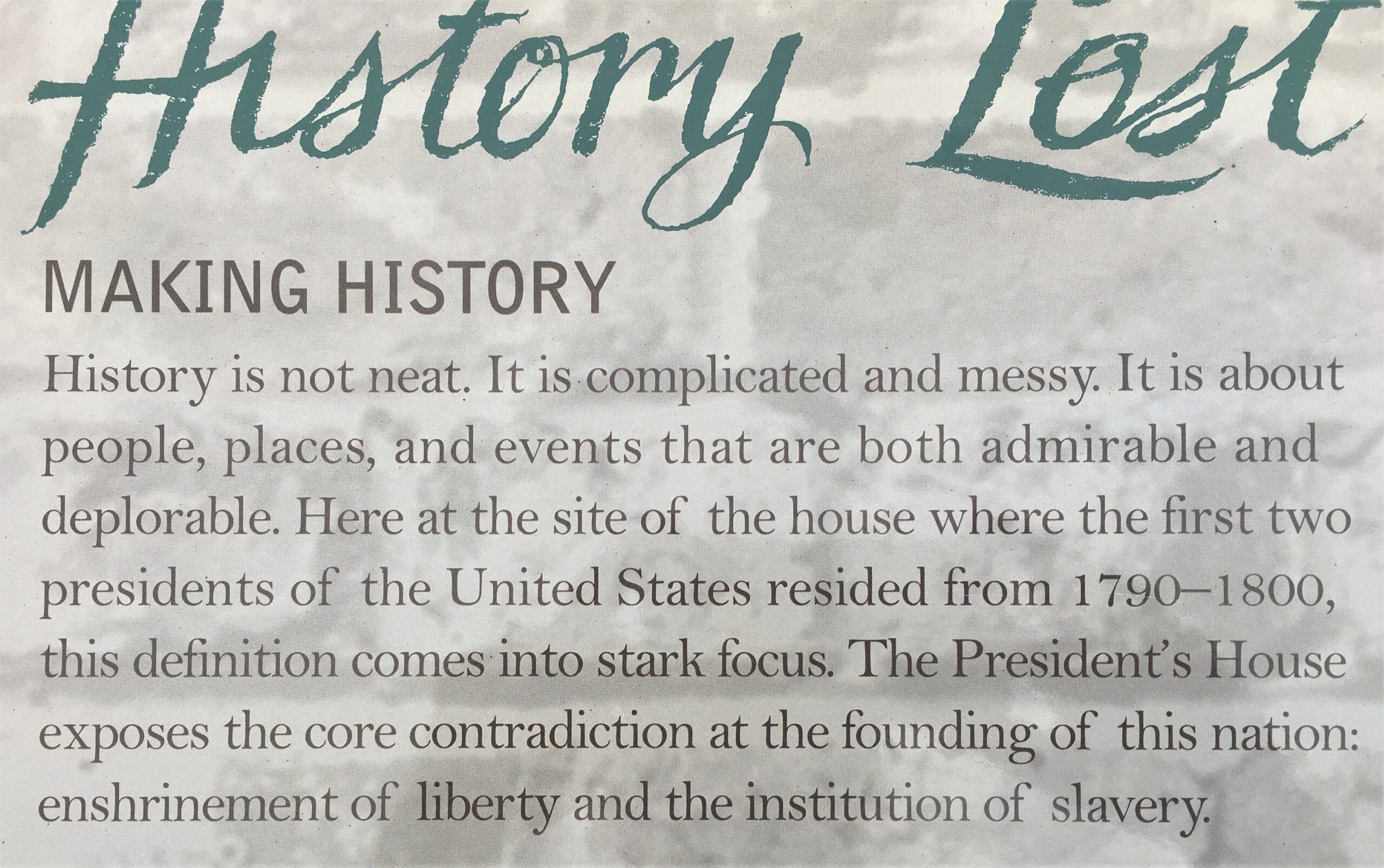


The VC opened up and we looked around in there for a bit. It seemed to be a combination city/National Park VC, which is neither here nor there. We didn’t spend much time inside. We were a bit anxious to get in to the Liberty Bell museum.



We were planning on trying to jog up the steps he’s famous for,
but the Art Museum where it was filmed is across town.

Once thing we noticed within all the NP places? There was security everywhere! You and your stuff had to go through detectors at nearly every place we stopped today and there were not only NP Rangers, but security as well in some places – like the Liberty Bell and Independence Hall. There was a LOT at Independence Hall.
In 1749, the Assembly asked Woolley (the original architect for the State House he began building in 1732) to add a tower and steeple to the south side of the building, thereby creating the building’s distinctive, church-like silhouette and providing a place to hang a new bell—the same bell that later became known as the Liberty Bell. ~ philadelphiaencyclopedia.org
We have our own feelings about the Liberty Bell, but until we visited today, we had no idea it was a global symbol. It actually began as the bell in the State House, that was rung to summon the politicians when it was time for meetings to take place. I’ll let you see the rest in pictures. 😊












You’ll have to look it up if you’d like to read the entire thing.
But just so you know, I had a lot of trouble finding any information on it.
They may have had it at the museum, and I just didn’t notice or thought I’d look it up later . . . .
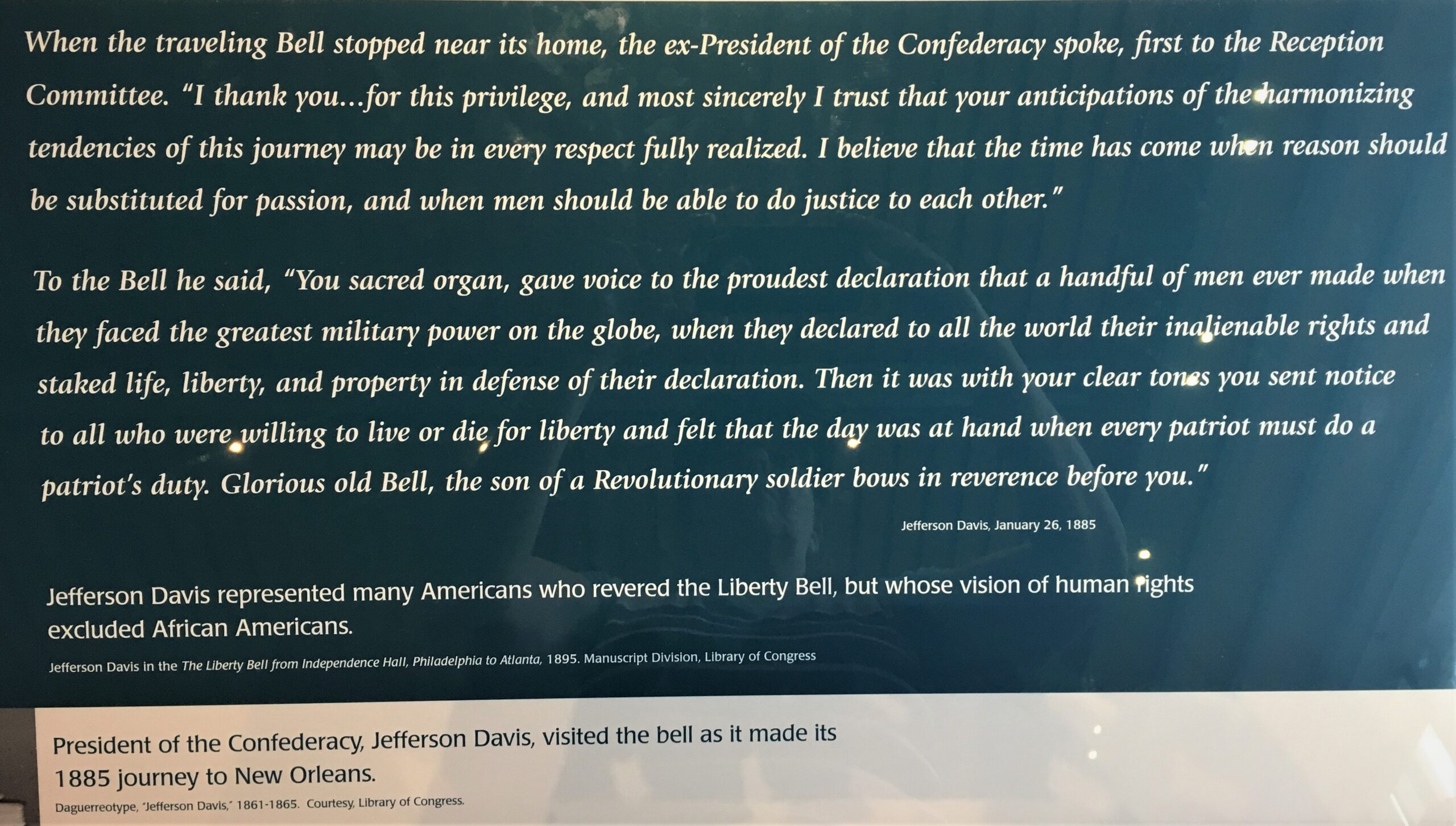

Doesn’t he look an awful lot like Lincoln in this picture?!?


We had to get timed tickets to visit Independence Hall, but once we finished with the Liberty Bell, we still had time to kill. We discovered there was a Benjamin Franklin museum, so we did that next. It was nice, and there was interesting information to be had, but being as how important Benjamin Franklin was to this country, we thought the information fairly sparse. (You won’t think that once you see all the pictures I took 😊) Blaine thinks it’s mostly set up to interest children, as well as adults. Maybe he’s right? Anyway, below are the pictures we took in the museum. If you want more information on one of our nation’s most important founding fathers, check this out: https://www.ushistory.org/franklin/info/index.htm There are several tabs on this website where you can spend hours learning about this great man that people only connect with flying kites in thunderstorms.


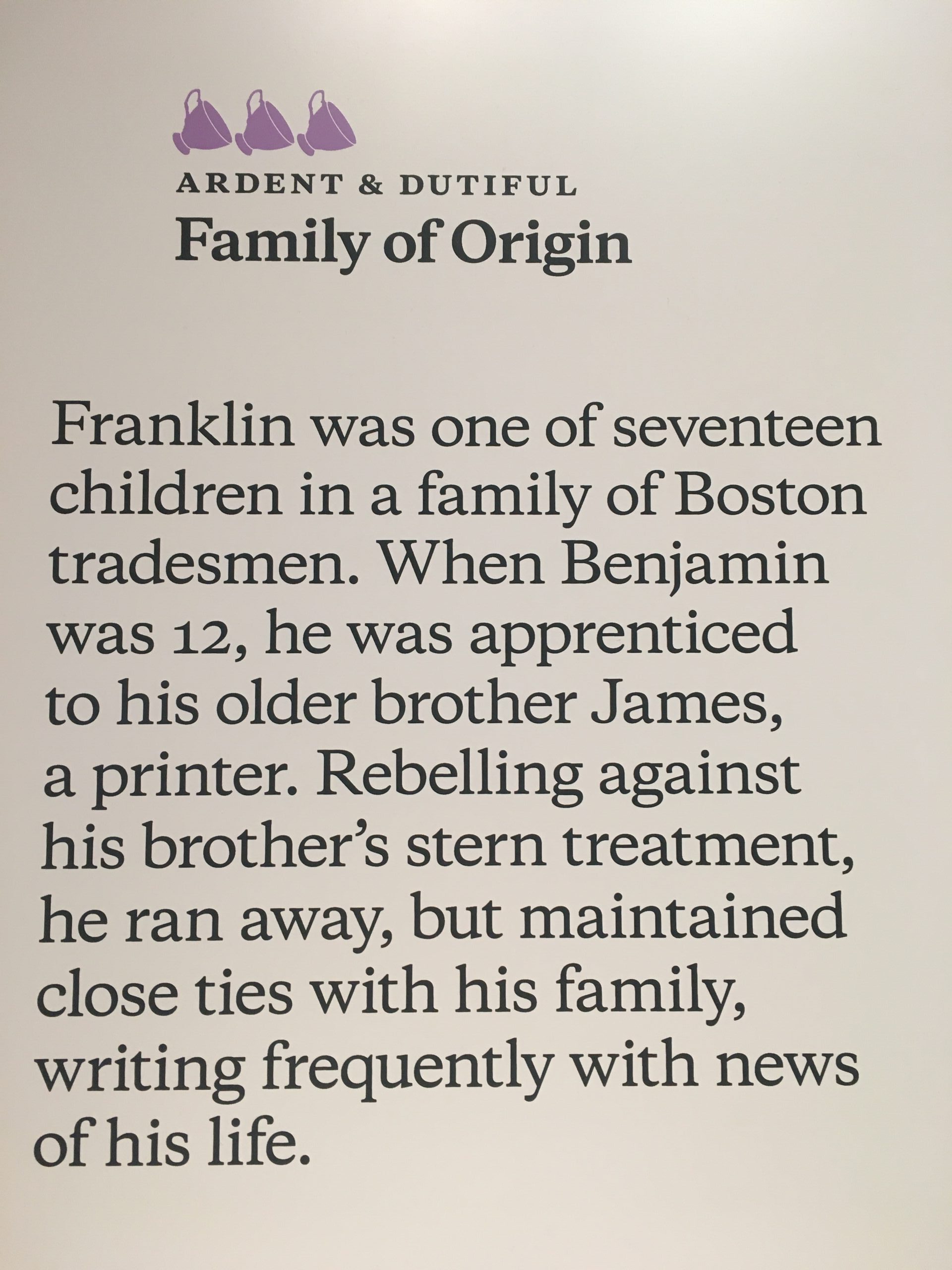
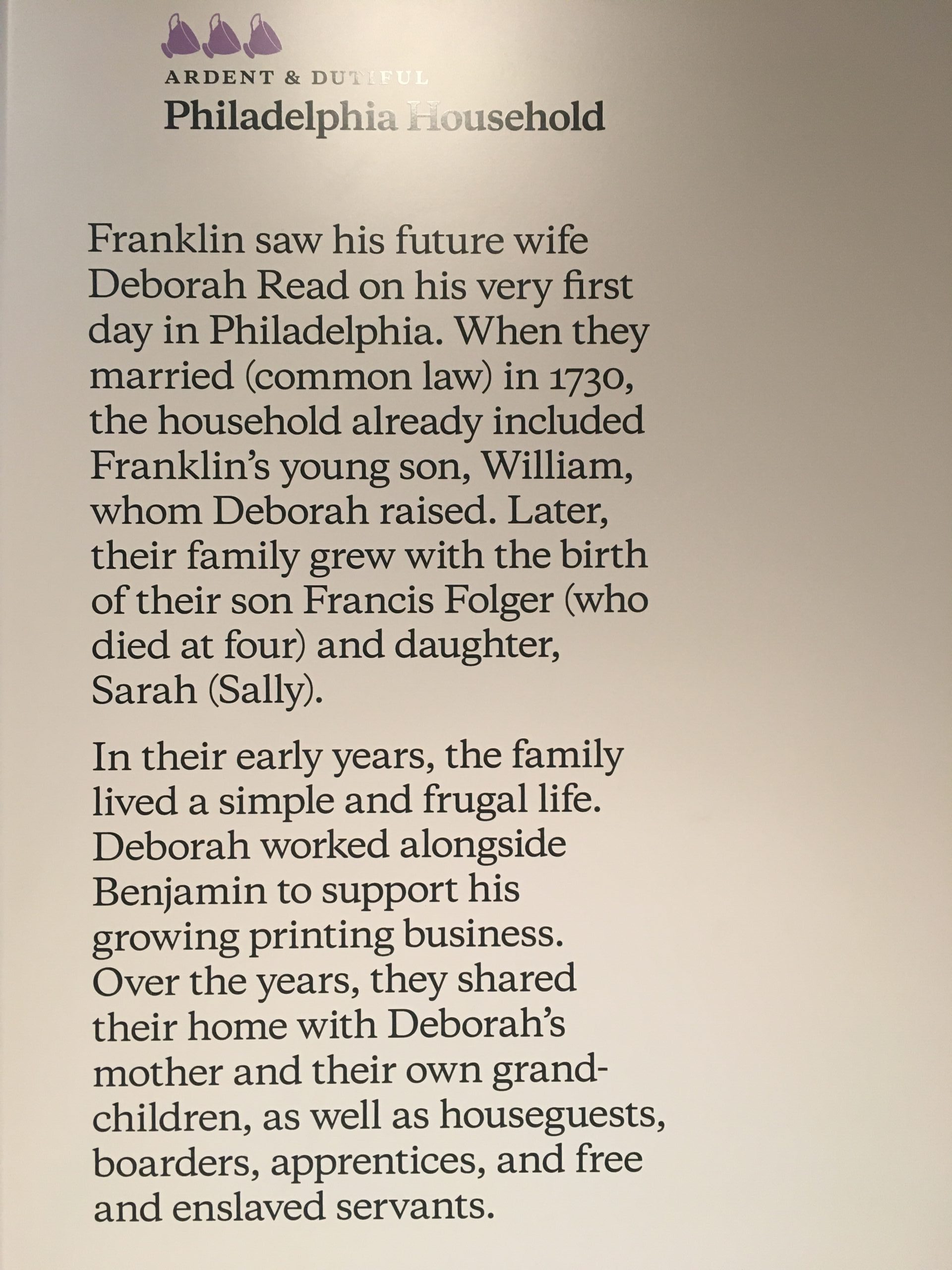
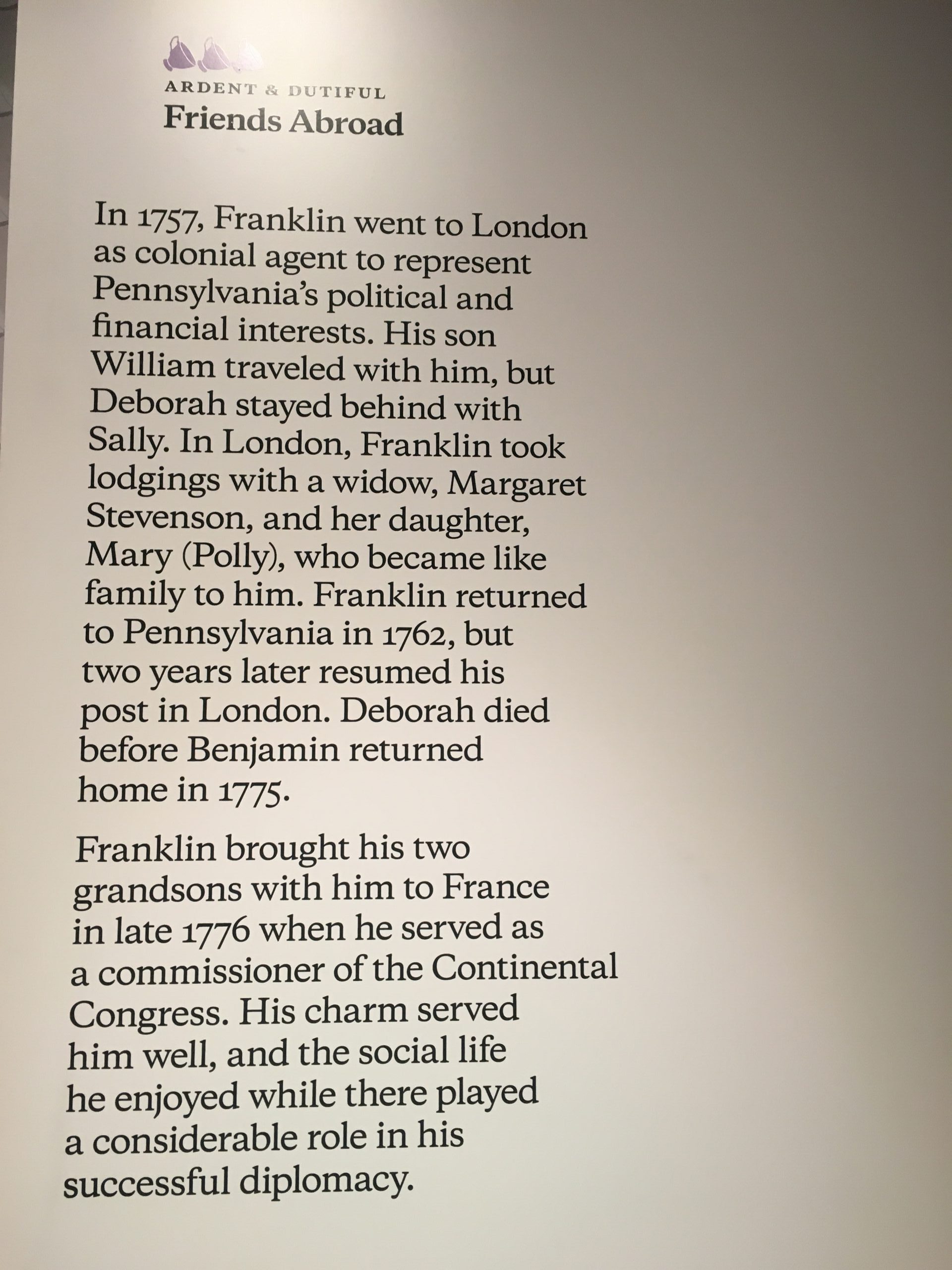


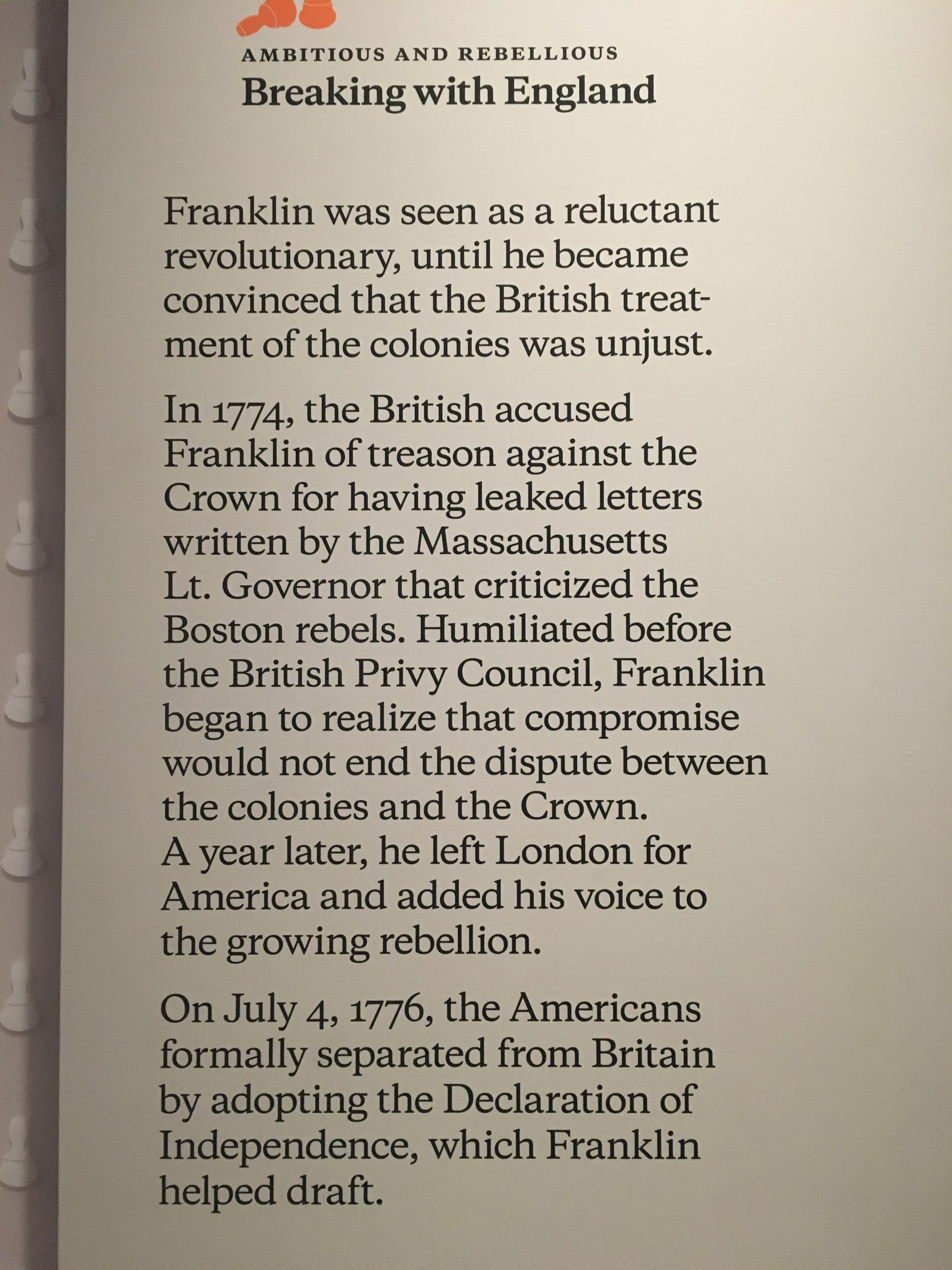

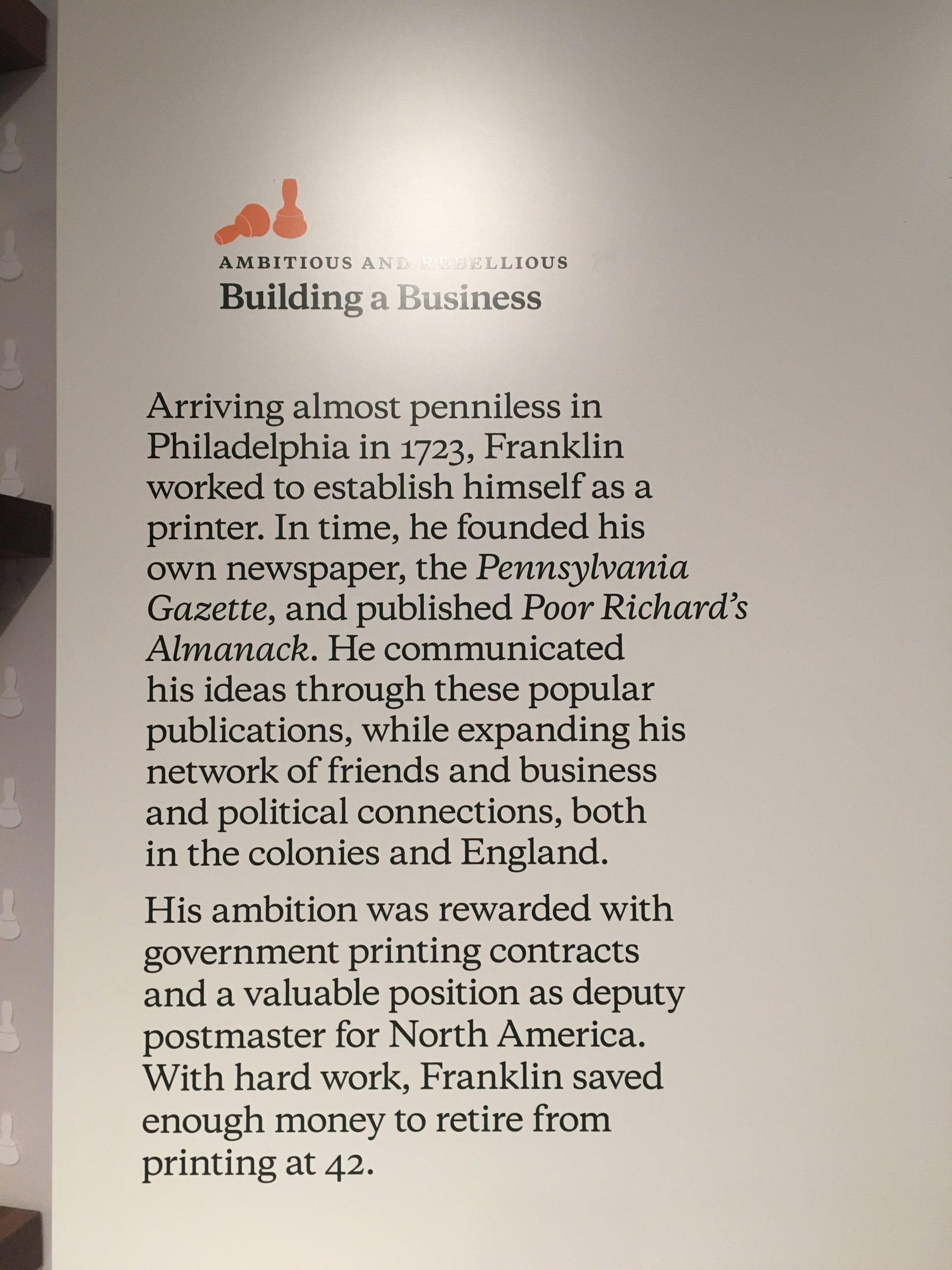


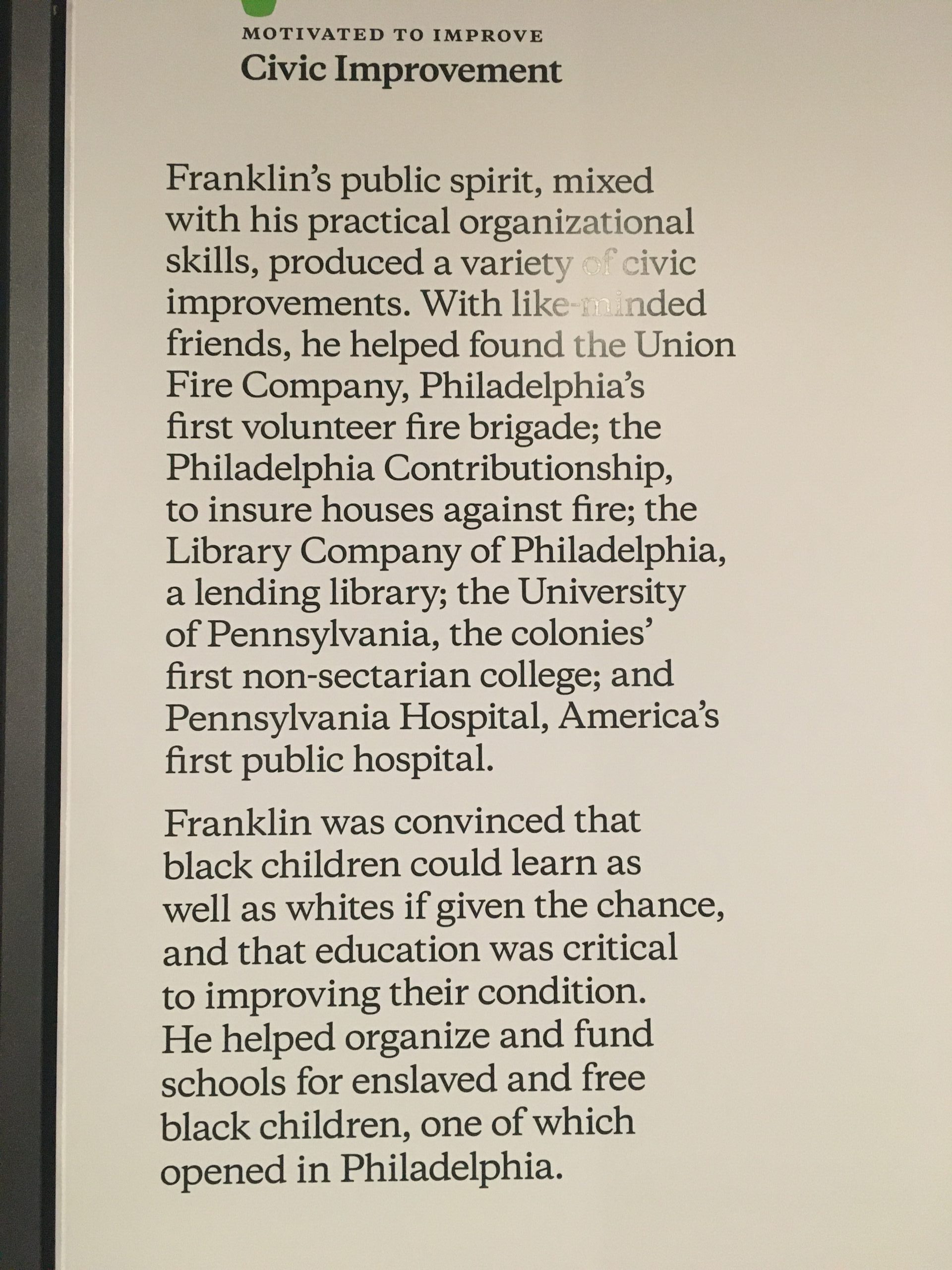


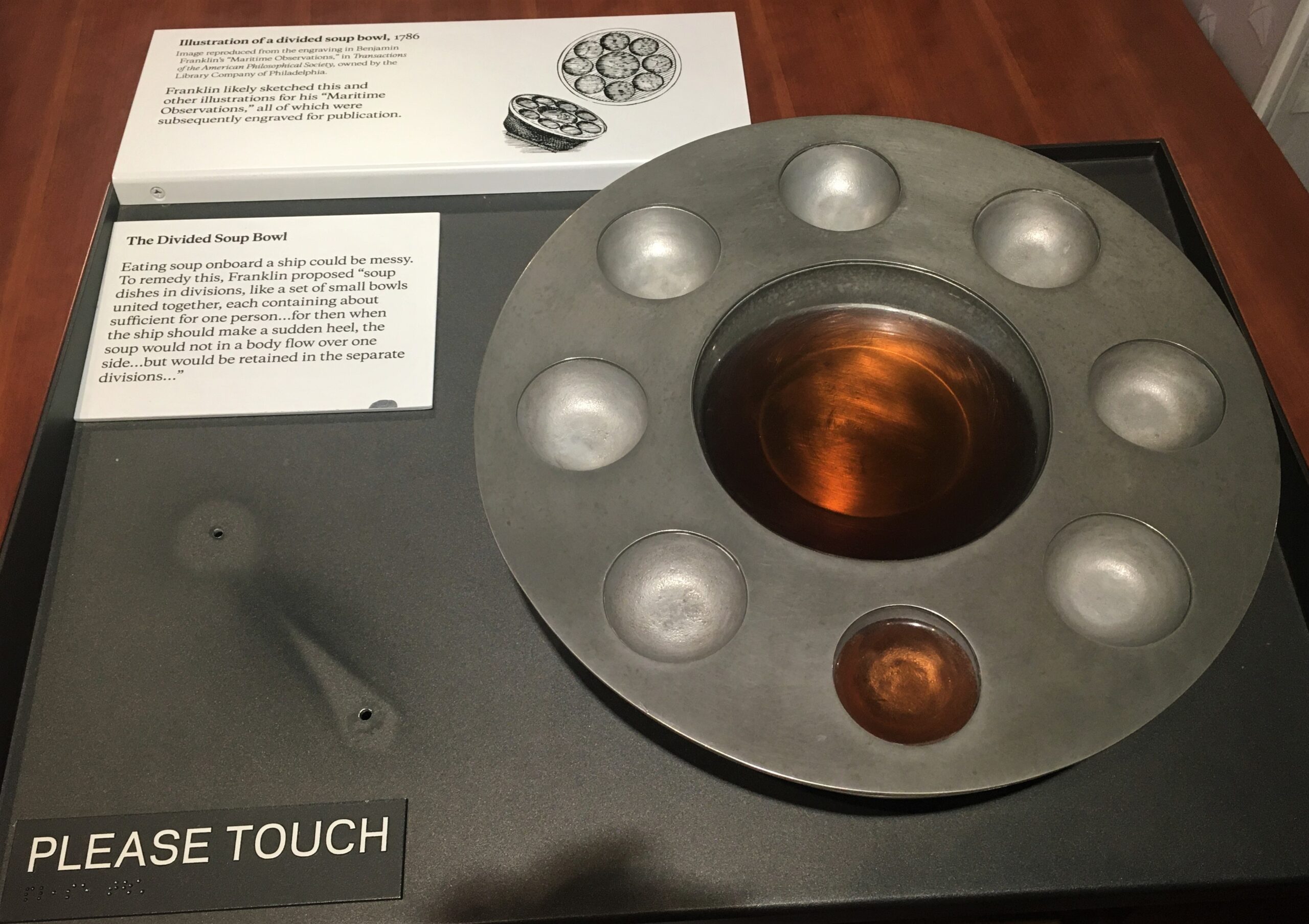




















Outside the actual museum building, there was a printing press and a post office. It’s a real post office, but it was also Ben’s post office at one time. I believe the printing press was as well, but it’s possible it was just ‘like’ his.





it had to be hung over a wooden bar to dry.


Time for our one meal of the day – cheesesteak. We did some research and found Sonny’s close to the NP, and it was very highly rated in several places. There’s not much to Sonny’s, but they make cheesesteaks, burgers and an assortment of sides. Everything was fresh-made and delicious! And super hot! We opted not for the ‘traditional’ sandwich with Cheese Whiz on it, but provolone instead. We just weren’t sure about the Cheese Whiz.



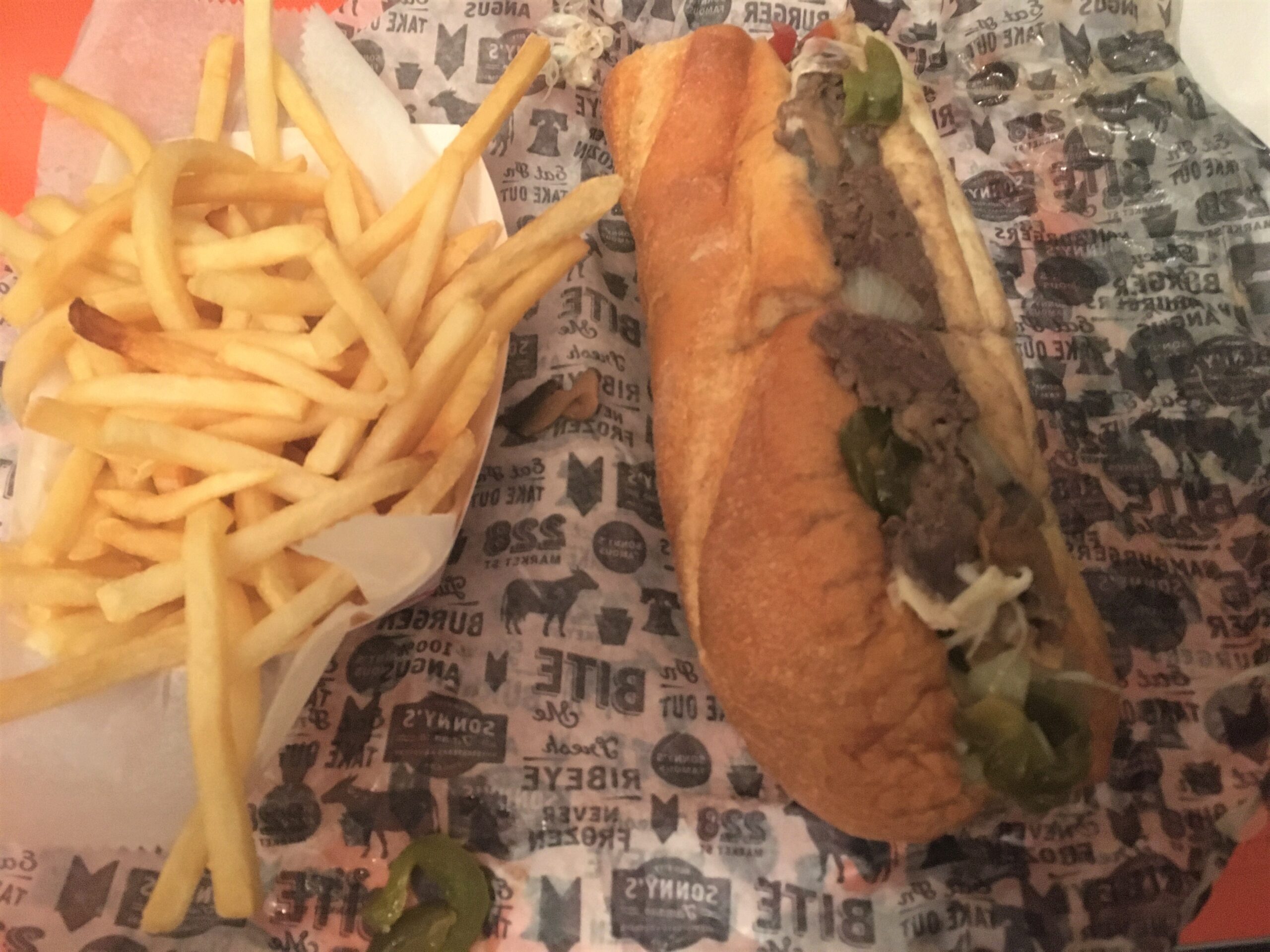
Bellies engorged once again, it was time to walk over for our Independence Hall tour. Our tour guide (a NP Ranger) did an excellent job explaining how the State House worked (because that’s what this was – a government building), and how it didn’t get the name we know it by until Marquis de Lafayette (hero of the American Revolution and friend to Thomas Jefferson) visited the United States in 1824. The people of Philadelphia began calling the place “The birthplace of Independence”, and “This is the Independence Hall” (the east wing of the building where the debating and signing took place). And before long, the building became known as Independence Hall.


One of the first things the Ranger told us was that roughly 90% of the outside of the building is original from 1732! And inside, about 70-75%. We found that astounding! But it also lends credence to the importance everyone has always felt for this important building.
Independence Hall is the birthplace of the United States. In 1776, the Second Continental Congress signed the Declaration of Independence here. Eleven years later, in the same room, delegates to the Constitutional Convention created and signed an enduring framework of government – the United States Constitution.
The Declaration of Independence and U.S. Constitution were both signed in this room. No one knows the specific seating arrangement of the Second Continental Congress or the Constitutional Convention. Today you see the tables arranged in two rows separated by a center aisle with the northern colonies/states on the north side of the room and the southern colonies/states on the south side of the room.
Independence Hall is the birthplace of America. The Declaration of Independence and U.S. Constitution were both debated and signed inside this building. The legacy of the nation’s founding documents – universal principles of freedom and democracy – has influenced lawmakers around the world and distinguished Independence Hall as a UNESCO World Heritage Site.
Construction on the building started in 1732. Built to be the Pennsylvania State House, the building originally housed all three branches of Pennsylvania’s colonial government. The Pennsylvania legislature loaned their Assembly Room out for the meetings of the Second Continental Congress and later, the Constitutional Convention. Here, George Washington was appointed Commander in Chief of the Continental Army in 1775, the Articles of Confederation were adopted in 1781, and Benjamin Franklin gazed upon the “Rising Sun” chair in 1787. ~ nps.gov
What they’re referring to as the “Rising Sun” chair is the chair George Washington sat in as he oversaw the Constitutional Convention. See more of an explanation below.

During the spring and sweltering summer of 1787, George Washington provided guidance for 55 state delegates who gathered in Philadelphia, Pennsylvania to fiercely debate the future of the United States.
The group of men had originally meant to gather with the intention to revise the Articles of Confederation, as they were seen as just barely holding their new country together. What happened instead ended up altering the course of history.
Soon after the convention began, on May 14, 1787, the delegates unanimously elected Washington to be the convention president. This was one of the few matters they agreed on, as they were a group of passionate federalists and anti-federalists. In presiding over the Constitutional Convention, he worked to forge consensus, demanding complete secrecy as the delegates set about the controversial task of not just revising the Articles of Confederation, but scrapping them all together.
Rising above conflicts between individual states, Washington created an atmosphere that allowed convention members to reach the compromises necessary to create a bold, new government. He stayed relatively quiet, allowing the delegates to debate the foundation of the Constitution amongst themselves. While Washington held the belief that America should have a strong central government and a single executive leader, he did not allow his bias to sway the other delegates. Washington mainly participated to keep order and provide a deciding vote on a variety of proposals. ~ mountvernon.org
At the close of the four-month session, James Madison reported that Benjamin Franklin said, “I have often looked at that (the emblem on the chair) behind the president without being able to tell whether it was rising or setting. But now I…know that it is a rising…sun.” The original chair Washington sat in was in the room with us.
One of the most widely held misconceptions about the Declaration of Independence is that it was signed on July 4, 1776. In fact, independence was formally declared on July 2, 1776, a date that John Adams believed would be “the most memorable epocha in the history of America.” On July 4, 1776, Congress approved the final text of the Declaration. It wasn’t signed until August 2, 1776. (FYI – epocha is an archaic spelling of the word ‘epoch’ which means an instant in time that serves as a reference point from which time is measured. Like the birth of Christ.)
After Jefferson wrote his first draft of the Declaration, the other members of the Declaration committee and the Continental Congress made 86 changes to Jefferson’s draft, including shortening the overall length by more than a fourth. He wasn’t too pleased, but he went along for the sake of the nation.
Thomas Jefferson and John Adams both died on July 4, 1826, the 50th anniversary of the vote to approve the Declaration of Independence.
The oldest signer of the Declaration was Benjamin Franklin, who was 70 at the time of the Declaration. Franklin went on to help negotiate the Treaty of Alliance with France in 1778 and the Treaty of Paris, which ended the Revolutionary War in 1783. He died in 1790.

This is where trials were held.

All the attorneys – both defense and prosecutors – shared the round table, as well as information.
During the trial, the defendant had to “stand trial” by standing in that ‘cage’. They were not permitted to sit.

I can remember two, but not the third.
The one facing left, was for a trial with a defendant so the person on trial could see them – “face their accusers”. The one facing forward was for grand juries to convene in.
You can see the third one in the first picture on the far left.

The chair up front was where Washington sat.
And it’s the original chair!!
Many of the things in this room are also original!


After we left Independence Hall, we discovered yet another building right next door – Congress Hall – where we took in another Ranger-led tour. Built as the Philadelphia County Courthouse, Congress Hall was home to the U.S. Congress from 1790 to 1800, while Philadelphia served as the temporary capital of the United States. Presidents Washington and Adams were both inaugurated in this building. Also, did you know that even before the Revolution, our judicial system had three branches (executive, judicial, legislative) of government? That’s how Britain’s government was set up, so that’s what the colonists used.










these giant portraits are of the King and Queen of France during our Revolutionary War.
They were presented as gifts on the 200th anniversary of our independence.


And yes, you have to do stairs to visit, there are no elevators.
Situated between Independence Hall and Congress Hall is the west wing of Independence Hall. Housed here is the Great Essentials exhibit, containing several original documents (including Washington’s original draft of the Constitution that he made notes on), and other important information.
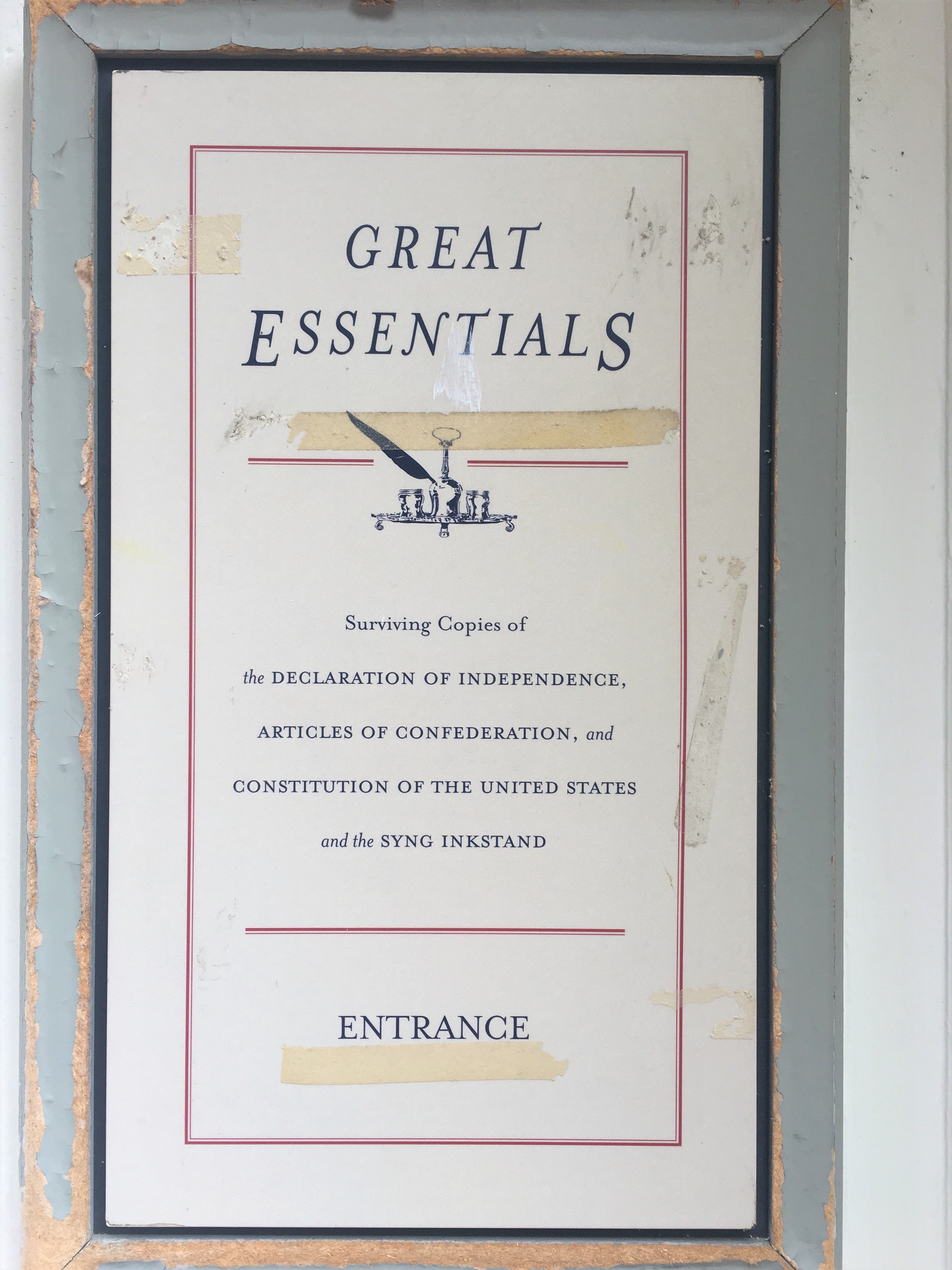

made by Washington, but they don’t show up in the picture.







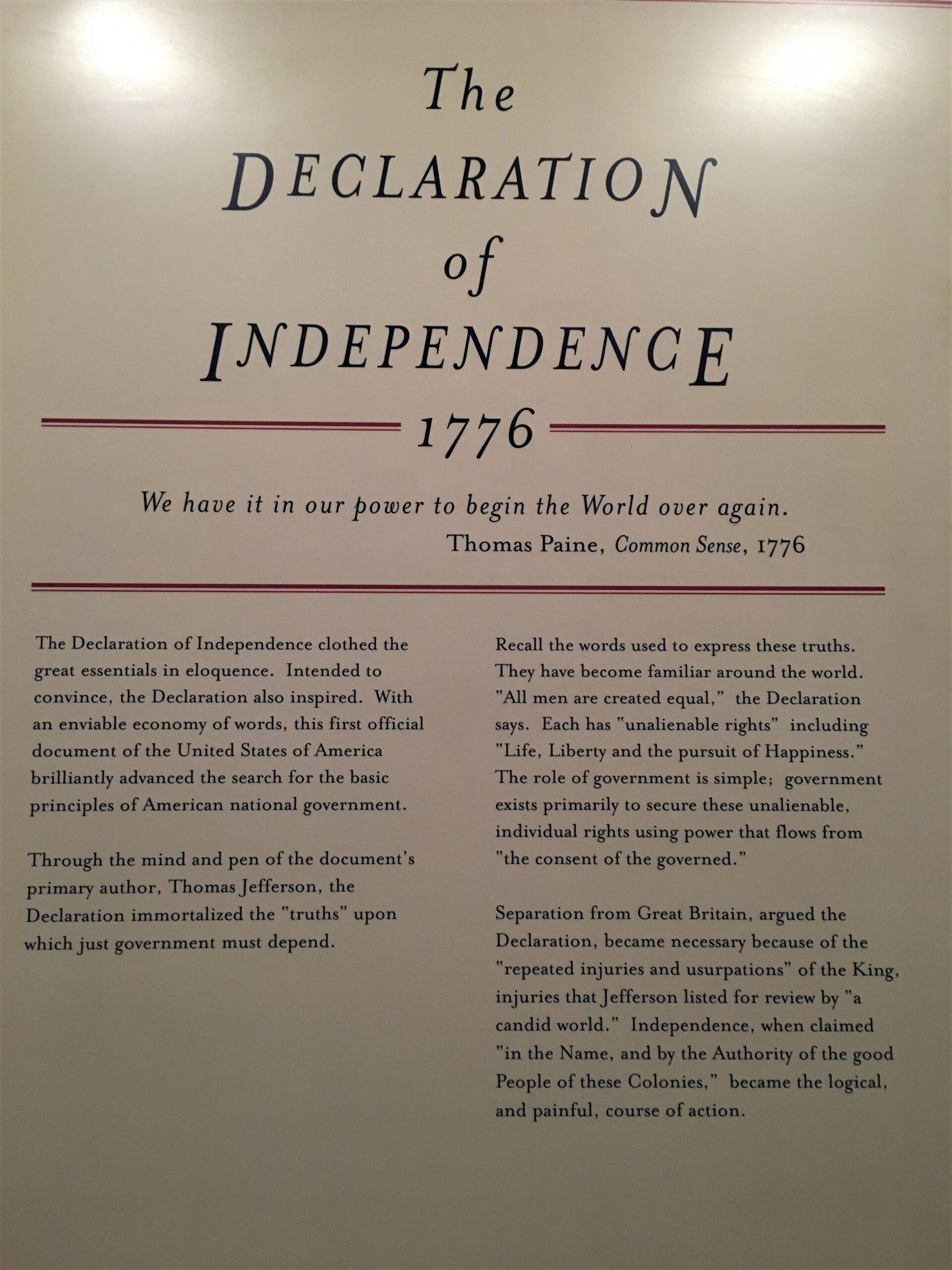
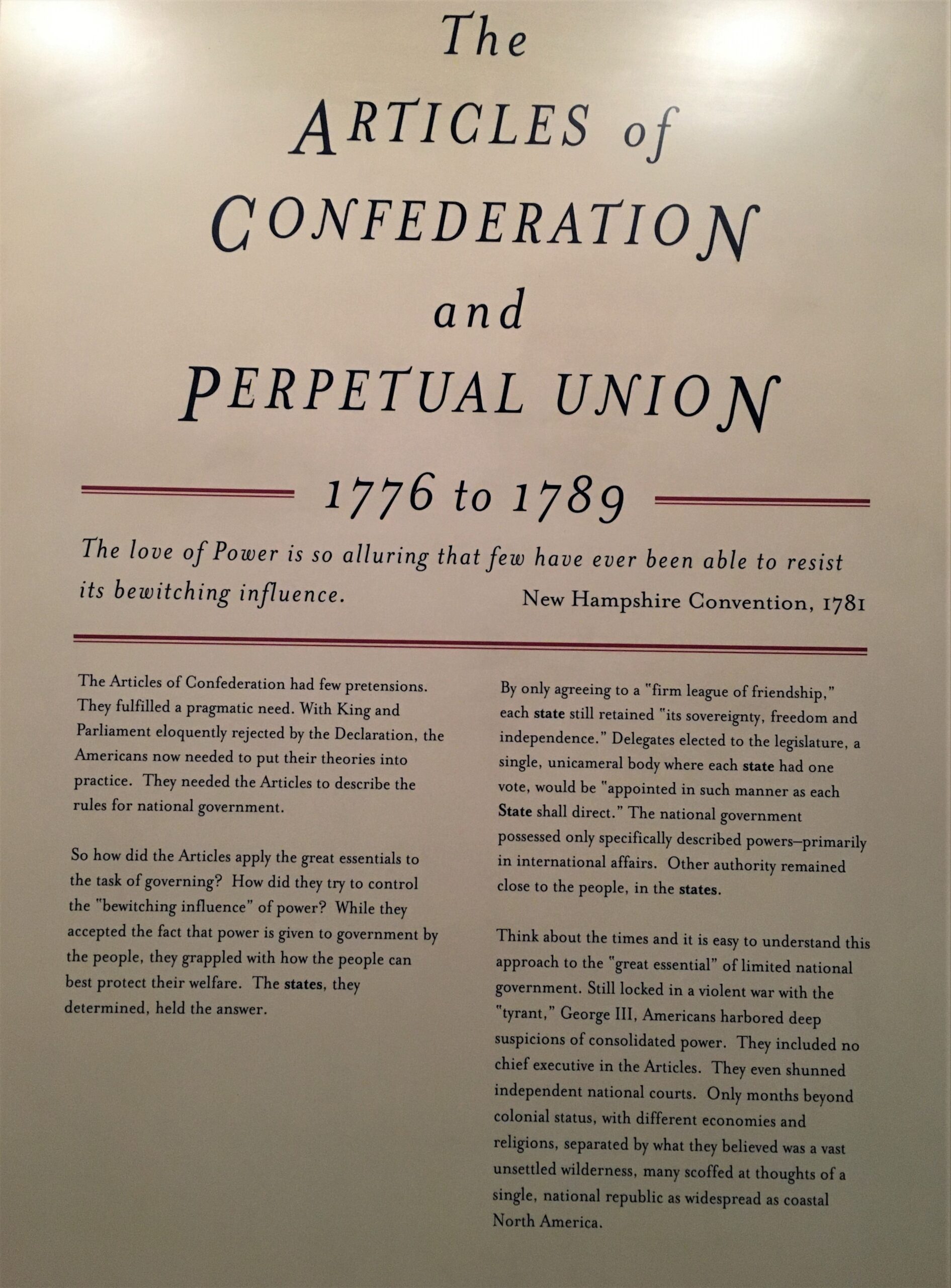

As we left, we discovered yet another building next to the east wing of Independence Hall – the Supreme court chamber in the Old City Hall. This area is much like what we saw and learned about in Independence Hall. We enjoyed speaking with the Ranger on duty here.



It’s actually a library, and the statue was donated because Franklin founded the first library.

And they were so gigantic, I could hardly get it all within my phone’s camera range –
without stepping way back, anyway.
It’s time to leave the national history and go in search of some of the other things on our list.
First, The Dream Garden. This is a Tiffany glass mural inside the lobby of the Curtis Building. It’s beautiful in pictures, but it’s stunning in person! Here’s what atlasobscura had to say about it:
Designed by Louis C. Tiffany and based on a Maxfield Parrish landscape, it took 6 months to install in 1916. The mural is 15 feet by 49 feet made up of 100,000 pieces of glass in over 260 color tones making it arguably the largest Tiffany piece in the world (though the Tiffany art glass dome located in Preston Bradley Hall in the Chicago Cultural center certainly has a claim.) Dream Garden was the largest glass mural in the country until 2007 when it was surpassed by the Wing Lung Bank Mural in Alhambra, CA.
Though there was an attempt to sell the mural for 9 million dollars to a casino owner in the late 1990s, Philadelphia designated the mural a “historic object” putting a stop to the sale. Eventually, ownership of the mural was handed over to be jointly shared by four Philadelphia cultural institutions.







From there, it was a short walk to Philadelphia’s City Hall. Again, I defer to atlasobscura for an explanation:
GIVEN THAT PHILADELPHIA IS THE BIRTHPLACE OF our nation, it’s only fitting that its seat of government is one of the largest municipal buildings in the country, and even in the world — bigger even than the U.S. Capitol Building.
This towering City Hall was built by architect John McArthur, Jr. in the Second Empire style, and was the tallest habitable tower in the world from 1894 until it was surpassed by the Singer Building in Manhattan in 1908.
The building’s antenna spire reaches 548 feet high, and atop it sits a larger-than-life statue of William Penn, the founder of Pennsylvania. Weighing in at 27 tons of bronze and standing 37 feet high, the statue itself towers as the tallest atop any building in the world. The metal portion of the tower boasts four giant clocks on each side, each 26 feet in diameter.
Today, well over a century after it was constructed, the City Hall still stands proud as the 16th tallest building in Pennsylvania and a reminder of the city’s uniquely important place in American history.

We thought we were in front!
It has 14.5 ACRES of floor space! We wondered why a tour of the interior and exterior of the place would take two hours. Now we know! Unfortunately, we didn’t have two hours. Plus, we didn’t realize the building has a ginormous tower! 😊 We came in from the side (which we thought was the front) and practically missed it. We kinda saw it and took a picture, but we didn’t realize what we were looking at.



But if you notice the building on the far right with the blue top?
That building is in the first picture we took – on the left.




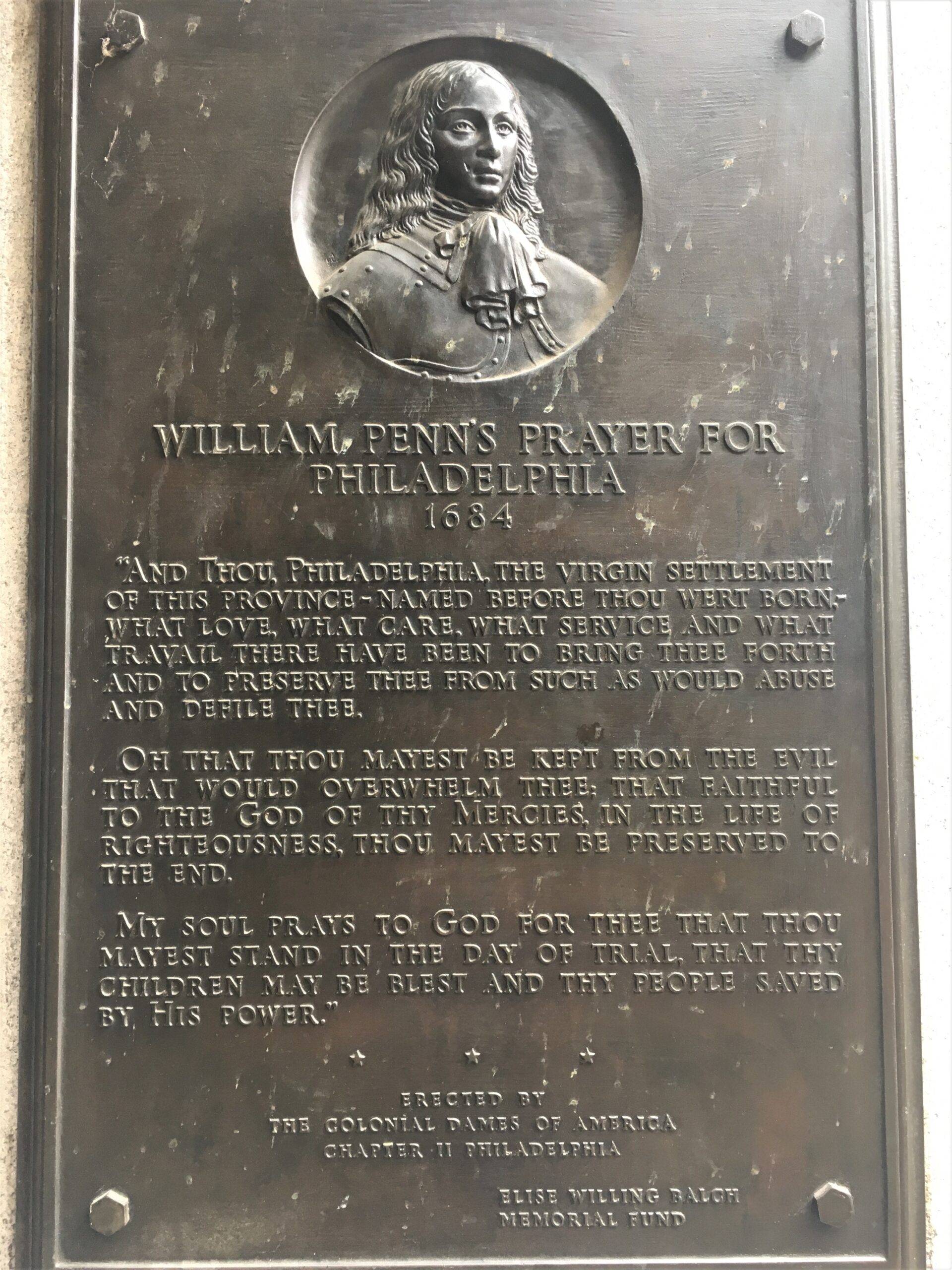


Near City Hall was the Wanamaker Building. These are a few pictures from our short walk.



We stopped here to see the working giant organ – – inside Macy’s Department Store! We’ve never seen the like! The store covered three stories!
I find all kinds of interesting things to see by using atlasobscura!
JOHN WANAMAKER DID THINGS A bit differently. Inspired by two great central markets, London’s Royal Exchange and Paris’ Les Halles, Wanamaker decided it was time to bring what would become one of the first department stores to America. He envisioned a grand shopping hall which would sell his already established menswear and would expand to sell woman’s clothing and dry goods.
Not only did Wanamaker envision a new kind of shopping destination, he pioneered a new shopping experience as well. The first to use and enforce the phrase, “The customer is always right,” Wanamaker ran his store under the message of the golden rule. Employees were to be treated with respect by their superiors, and all were offered free medical care, recreational facilities, profit sharing plans, and pensions long before it became the standard.
One of the most important things Wanamaker left to modern stores was the price tag. Before he popularized the use of set prices, stores relied on haggling. Wanamaker believed that if everyone was equal before God, then everyone should be equal before price. It seems obvious today, but it wasn’t until Wanamaker invented the price tag that it became the norm.
Opened in 1877, the store was the first to use electrical lighting (in 1878) and the first to use a pneumatic tube system for transporting cash and documents (in 1880). By 1910, Wanamaker had begun updating his store, slowly phasing out the old Moorish facade that followed the Grand Depot styles of London and Paris, in favor of the lavish, Florentine style it still has today. The new building featured the incredible Wanamaker Organ, formerly the St. Louis World’s Fair pipe organ. Despite the organ’s imposing size, it was decided that it was not large enough to fill the Grand Court with its music, and was expanded by Wanamaker’s own staff of organ builders. After a period of a few years, the organ had become the largest in the world.
Eventually, Wanamaker’s customers petered off to other department stores like Bloomingdale’s and Macy’s, and after being sold from retailer to retailer for many years, has become a Macy’s itself. Thankfully, Wanamaker’s was designated a National Historic Landmark in 1978, and visitors to Macy’s can still marvel at one of the first department stores in America and the largest operating musical instrument in the world, the famous Wanamaker organ, which is played every day except Sunday.
Happily, even Wanamaker himself couldn’t put a price tag on that.





Incredible!
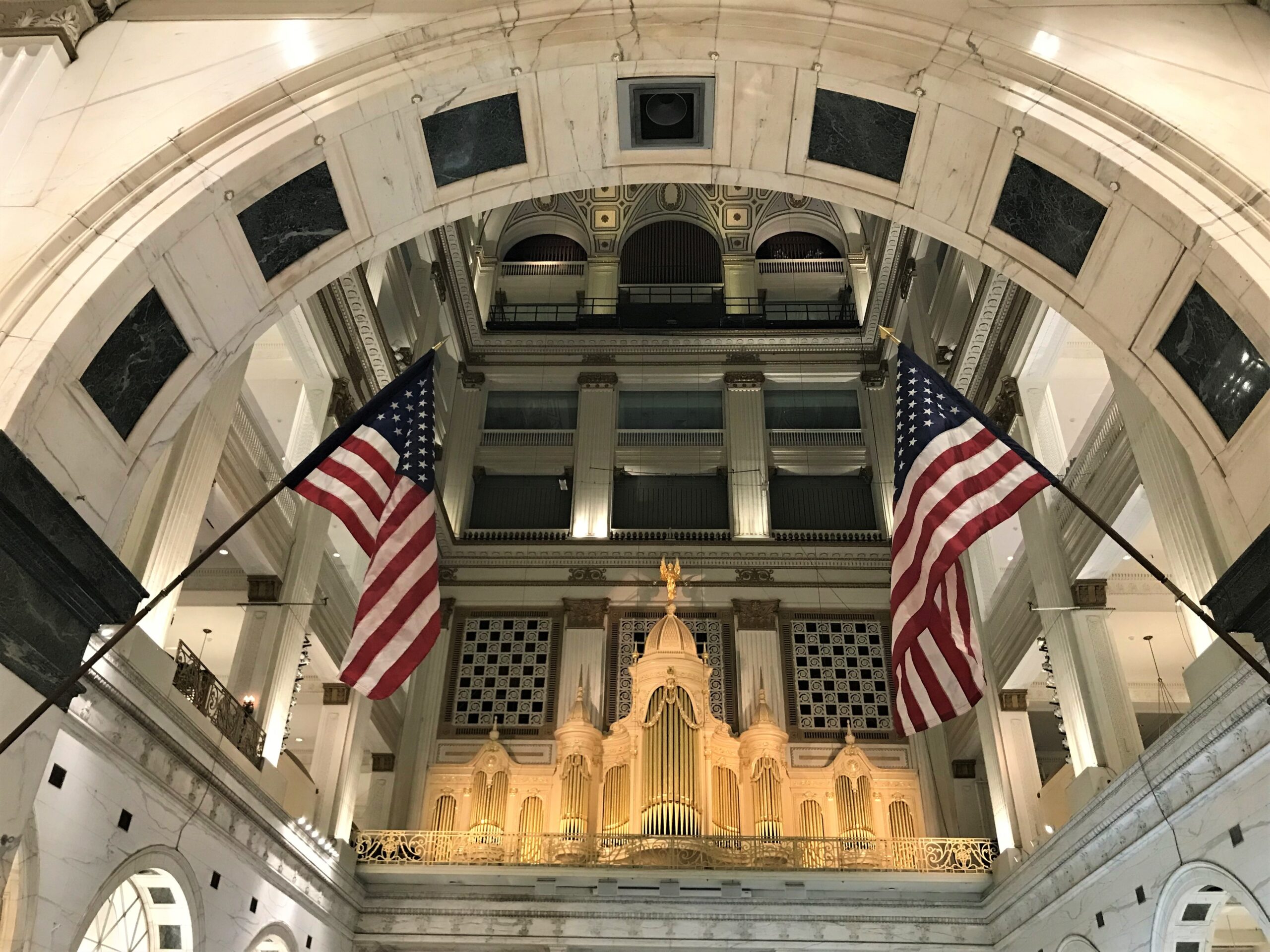


Very sad to say, we had no idea they did 45-minute concerts twice a day that are free to the public! We missed out on a fantastic event! ☹ You can also book private tours of the organ for only $18/person. That would’ve been great too!
Our final stop for the day was the home where Thomas Jefferson spent two weeks working on the Declaration of Independence. We were told earlier today this building was demolished at one point and the National Park Service completely rebuilt it in accordance with the blueprints and information of the time.


Tomorrow, we leave for an overnight trip!
